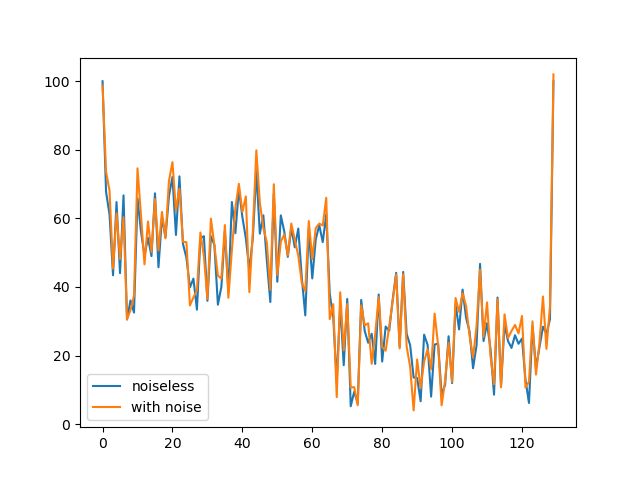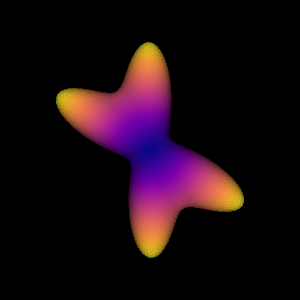MultiTensor Simulation¶
In this example we show how someone can simulate the signal and the ODF of a single voxel using a MultiTensor.
import numpy as np
from dipy.sims.voxel import multi_tensor, multi_tensor_odf
from dipy.data import get_sphere
For the simulation we will need a GradientTable with the b-values and b-vectors Here we use the one we created in Gradients and Spheres.
from gradients_spheres import gtab
In mevals we save the eigenvalues of each tensor.
mevals = np.array([[0.0015, 0.0003, 0.0003],
[0.0015, 0.0003, 0.0003]])
In angles we save in polar coordinates (\(\theta, \phi\)) the principal
axis of each tensor.
angles = [(0, 0), (60, 0)]
In fractions we save the percentage of the contribution of each tensor.
fractions = [50, 50]
The function multi_tensor will return the simulated signal and an array
with the principal axes of the tensors in cartesian coordinates.
signal, sticks = multi_tensor(gtab, mevals, S0=100, angles=angles,
fractions=fractions, snr=None)
We can also add Rician noise with a specific SNR.
signal_noisy, sticks = multi_tensor(gtab, mevals, S0=100, angles=angles,
fractions=fractions, snr=20)
import matplotlib.pyplot as plt
plt.plot(signal, label='noiseless')
plt.plot(signal_noisy, label='with noise')
plt.legend()
#plt.show()
plt.savefig('simulated_signal.png')

Simulated MultiTensor signal¶
For the ODF simulation we will need a sphere. Because we are interested in a simulation of only a single voxel, we can use a sphere with very high resolution. We generate that by subdividing the triangles of one of DIPY’s cached spheres, which we can read in the following way.
sphere = get_sphere('repulsion724')
sphere = sphere.subdivide(2)
odf = multi_tensor_odf(sphere.vertices, mevals, angles, fractions)
from dipy.viz import window, actor
# Enables/disables interactive visualization
interactive = False
ren = window.Renderer()
odf_actor = actor.odf_slicer(odf[None, None, None, :], sphere=sphere, colormap='plasma')
odf_actor.RotateX(90)
ren.add(odf_actor)
print('Saving illustration as multi_tensor_simulation')
window.record(ren, out_path='multi_tensor_simulation.png', size=(300, 300))
if interactive:
window.show(ren)

Simulating a MultiTensor ODF.¶
Example source code
You can download the full source code of this example. This same script is also included in the dipy source distribution under the doc/examples/ directory.
